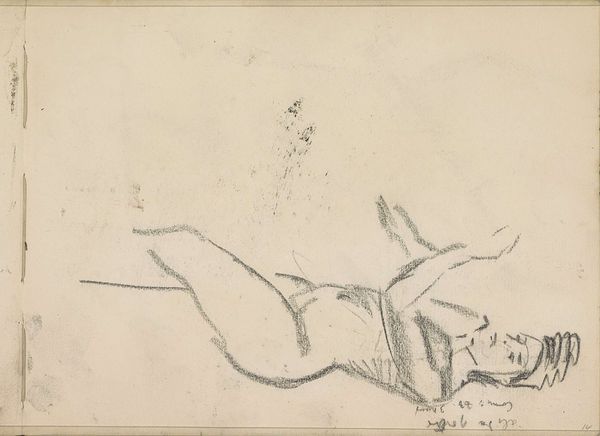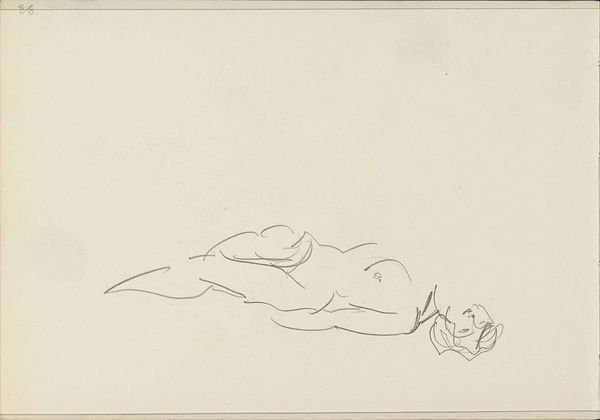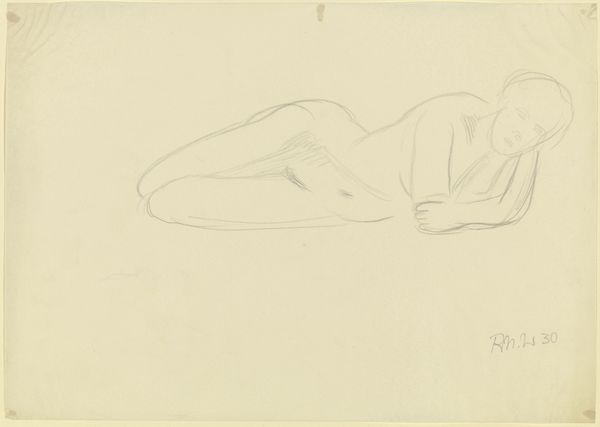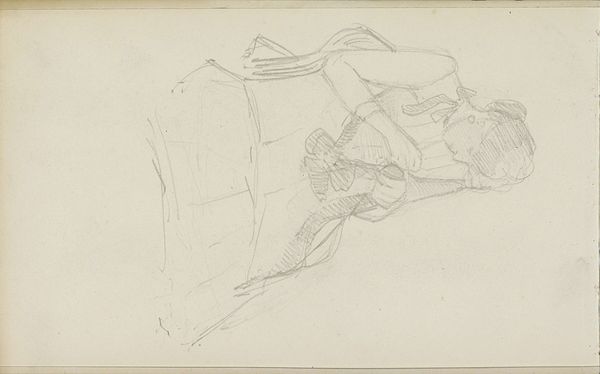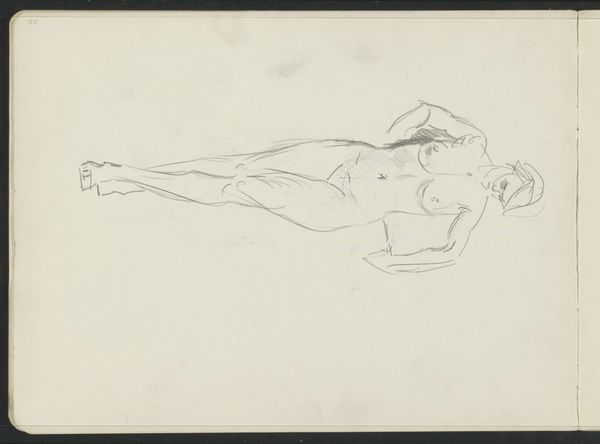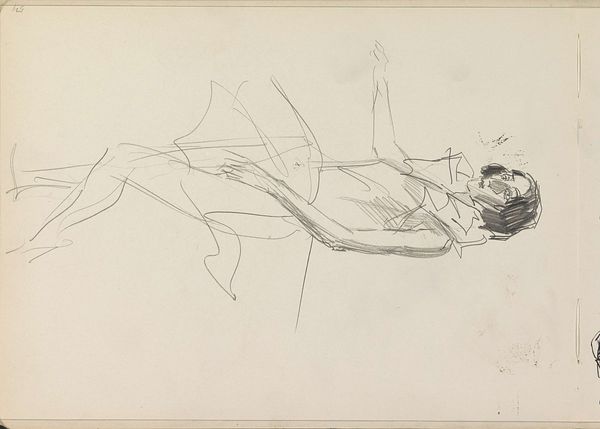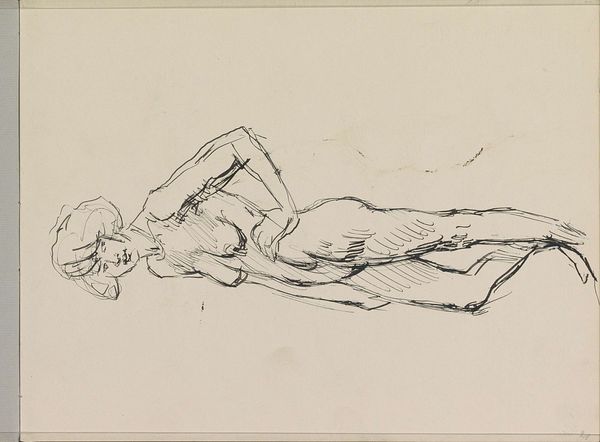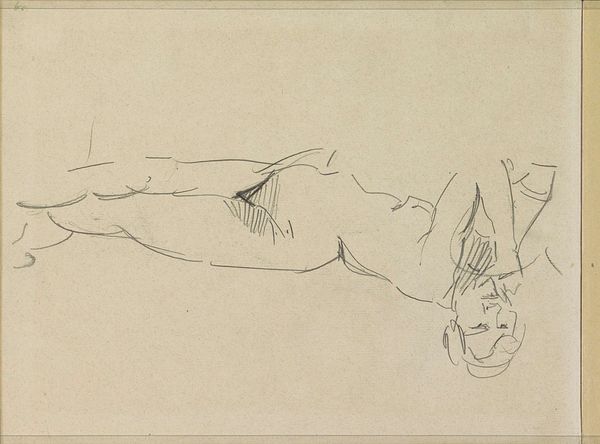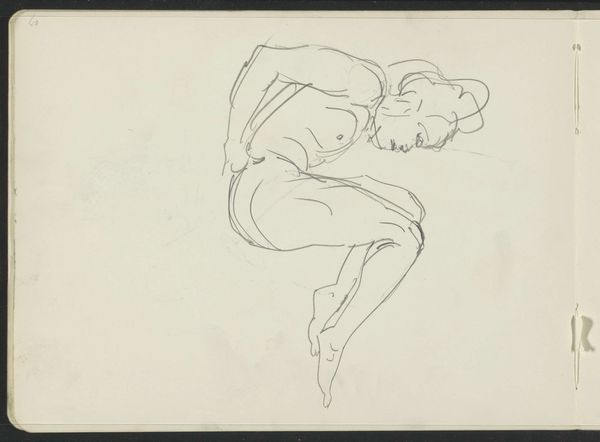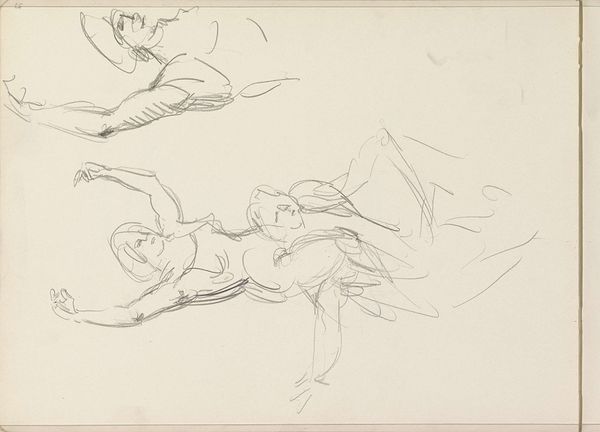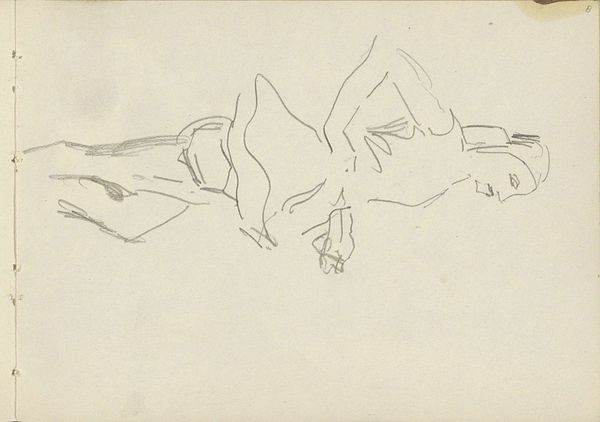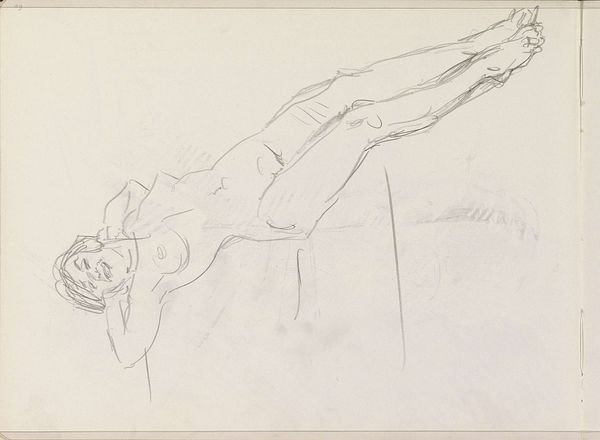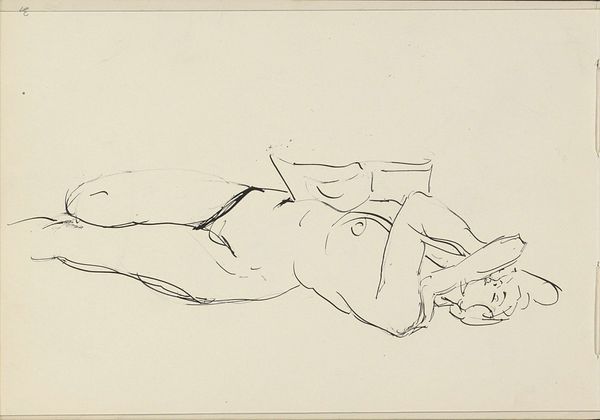
drawing, pencil
#
drawing
#
figuration
#
romanticism
#
pencil
#
academic-art
#
nude
Copyright: Public domain
Curator: What a delicate sketch. Immediately I feel transported to a world of lightness, fragility, and ephemeral beauty. Editor: I agree, it is delicate. Though I wonder, looking at the texture of the paper and the medium, how ‘light’ pencil truly can be, considering it is essentially processed graphite, pressed wood pulp and bound by, essentially, glue. Curator: It's ‘A Putto Pursuing a Butterfly’, a drawing by John Gibson, created around 1825. The figure, nude and winged, reaches out, seemingly suspended in air after a butterfly, an icon of transformation. Think Psyche, of course. Editor: The use of pencil is key here, I think. The almost tentative marks feel of a moment, of capturing something fleeting. Was it a study for something larger? I’m looking at the almost obsessive hatching and rendering of the musculature– there's labor involved in what seems light at first glance. Curator: That sense of striving is essential, yes. Consider the symbolism of the butterfly - the soul, metamorphosis, the fleeting nature of earthly life… These layered readings would have been so potent in the Romantic era. It is meant to echo the human journey. Editor: And those wings! We are looking at bird-like forms, and the artist does so meticulously, as a scientific observer – yet they lift our figure upwards. I appreciate how this pencil drawing allows for a level of detail we might miss in sculpture from this same period, as sculpture often strives for mass instead. Curator: Exactly. The choice of drawing encourages an intimacy, a direct connection to the artist’s hand and, by extension, to these potent symbols he is grappling with. Editor: I find myself considering what John Gibson, active between Rome and Britain at this moment, thought about how drawings became consumed, distributed. Were they merely studies, to be cast aside after sculpture, or worthy of display? This blurring of category makes me curious. Curator: His drawing helps us explore the cultural anxieties about mortality and aspiration circulating during the Romantic period through simple yet loaded visual language. Editor: And the choice of humble materials reminds us to carefully consider the purpose, reception, and the place of drawings like this.
Comments
No comments
Be the first to comment and join the conversation on the ultimate creative platform.
